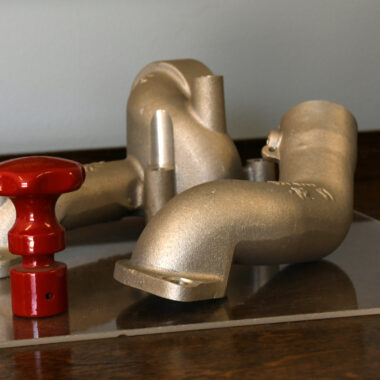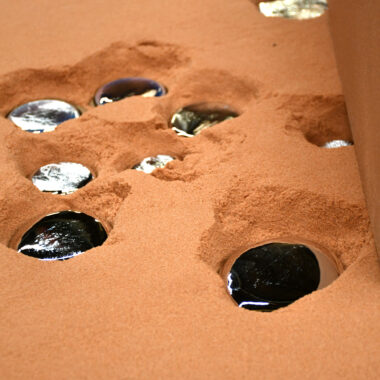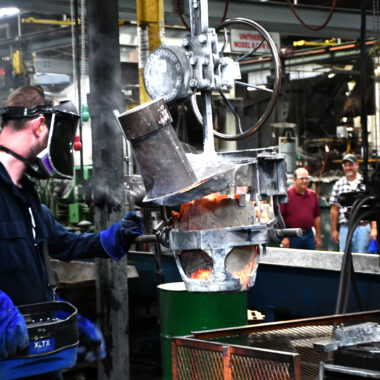Boost Your Production Line: Aluminum Casting Methods That Supply Results
Boost Your Production Line: Aluminum Casting Methods That Supply Results
Blog Article
Study the World of Aluminum Spreading: Recognizing the Different Methods
Light weight aluminum casting is a basic process in the manufacturing sector, with various techniques employed to produce exact and intricate elements. From the traditional sand spreading approach to the sophisticated die spreading process, each technique offers unique advantages depending on the needs of the task.
Sand Casting Technique
Sand spreading, a widely-used approach in aluminum casting processes, includes developing mold and mildews made of compacted sand for putting liquified steel. This approach is affordable and very functional, making it a popular option for various markets. The procedure starts with the creation of a pattern, normally constructed from timber or steel, which is after that pushed right into the sand to leave an impact. The sand combination, typically silica sand mixed with a binder like clay, is firmly packed around the pattern to form a mold cavity. When the mold and mildew prepares, it is securely put in a flask and molten light weight aluminum is put right into the dental caries.
After the steel has cooled and strengthened, the sand mold and mildew is escaped to reveal the aluminum spreading. Sand casting allows for the manufacturing of intricate shapes and large components that might be challenging or expensive to generate utilizing other approaches. It is likewise a lasting technique as the sand can be reused and utilized multiple times, reducing waste in the spreading process.
Long-term Mold Technique

One considerable benefit of the Irreversible Mold And Mildew Strategy is the enhanced dimensional accuracy it offers. The steel mold and mildew permits for tighter resistances and better information in the final aluminum castings contrasted to sand spreading techniques. This precision makes it a favored choice for applications where tight dimensional control is essential, such as in the automotive and aerospace industries.

Pass Away Casting Refine

Financial Investment Casting Strategy
Using a precision spreading technique, Investment Casting Approach entails producing intricate light weight aluminum elements by pouring liquified metal right into a ceramic mold. This process, likewise known as lost-wax spreading, begins with the creation of a wax pattern of the preferred part (aluminum casting).
Financial investment spreading is commonly utilized for making components in markets where detailed designs and tight tolerances are needed, such as aerospace, auto, and medical equipment. The adaptability and precision of the Financial investment Casting Method make it an important method in the globe of light weight aluminum casting.
Lost Foam Casting Technique
Having explored the elaborate precision of Financial investment Casting Strategy, the emphasis currently moves to the ingenious method of Lost Foam Casting in light weight aluminum part manufacturing. Lost Foam Casting, also recognized as evaporative pattern spreading, is a contemporary method where a foam pattern of the desired component is developed and then coated with a refractory product.
In Addition, Lost Foam Casting is a cost-effective procedure as it reduces the requirement for cores and allows for the production of light-weight elements. Regardless of its advantages, Lost Foam Spreading requires cautious control of the spreading process to ensure and stop issues high quality parts.
Conclusion
To conclude, aluminum spreading offers a range of approaches such as sand casting, long-term mold and mildew technique, pass away spreading, investment spreading, and shed foam spreading. Each Visit This Link method has its very own advantages and applications, making light weight aluminum casting a functional and widely utilized process in numerous sectors. Understanding the differences between these techniques is crucial in selecting the most appropriate spreading strategy for details manufacturing requirements.
Sand casting, a widely-used method in aluminum casting processes, includes producing mold and mildews made of compressed sand for putting liquified steel. aluminum casting.The Irreversible Mold And Mildew Strategy, like sand spreading, is an additional widespread approach used in light weight aluminum spreading procedures, using distinctive benefits in terms of mold and mildew reusability and dimensional precision. The steel mold enables for tighter tolerances and finer details in the last light weight aluminum castings contrasted to sand casting techniques. The two main types of die casting are cold chamber pass away spreading and warm chamber die casting, each suitable for different kinds of light weight aluminum alloys.In verdict, explanation light weight aluminum casting offers a variety of methods such as sand spreading, irreversible mold and mildew method, die spreading, financial investment spreading, and lost foam spreading
Report this page